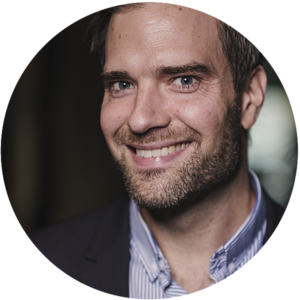You need to get the whole picture of how a solution is performing to measure your real success.
The architectural approach tries to foresee every future challenge. However, this method is not a good fit for scenarios where stakeholders change their requirements every now and then. The Scaled Agile Framework (SAFe) is a tool to merge these two very different approaches into a working and effective solution.
That is why we have decided to educate and certify our consultants in SAFe.
What Is Scaled Agile Framework (SAFe)
SAFe comes to life in 2011 and combines agile and lean principles while aiming to achieve closer collaboration and gelling between software development teams. A major goal of this framework is to centralize decision-making.
The framework consist of three levels called Team, Program and Portfolio and offers multiple options for configuration depending on the team size.
SAFe is mapping roles, responsibilities and activities within the software development process, enabling enterprises to get the entire perspective. Thus, organizations are able to measure whether software development process meets business objectives and reveals opportunities to improve workflows. It also introduces predictability in the entire process of software development, which in turn improves the project management process.

Source: Scaled Agile, Inc.
One of the main goals of this lightweight framework is making agile principles scalable for large enterprises. It introduces a top-down approach in development processes that usually run from bottom to the top. Centralized decision-making is at the core of SAFe although some experts are arguing that this approach might eliminate creativity at team level.
What Are the Core Principles of SAFe?
As SAFe is aimed at large organizations and has particular focus on business objectives, it re-defines the core principles of agile into a new approach whose pillars are:
- Realize the economic and business value of a project.
- Make decisions by applying a systematic approach.
- Plan for possible changes in advance.
- Develop software in small increments.
- Set realistic objectives and deadlines.
- Reduce batches to the smallest possible size.
- Work at a constant rate (Cadence).
- Have an idea about the real needs of stakeholders.
- Decentralize the decision-making process.
Advantages of Adopting SAFe
Project management within the framework of software development in large organizations is always a challenge. SAFe goes a step further compared to traditional agile principles and asks for software team leaders to deal with strategy problems that are usually solved at higher level.
Therefore, it enables the implementation of a coordinated strategy for complex projects at scale. By maintaining a big picture view of software development, organizations can manage projects that involve hundreds of software developers without losing focus.
The most marked advantages of adopting SAFe for project management and successful completion of software development initiatives include:
- It enables you to quickly adapt to the ever-changing technology and economic conditions.
- C-Level managers and software development teams collaborate in a transparent way.
- SAFe delivers scalability and configurability while offering consistent approach toward planning, execution and delivery.
- SAFe’s Program Increment (PI) Planning sessions enable agile teams to meet face to face and define what goals they want to achieve during a fixed time period, which also results in bringing more innovative ideas on the table.
- Managers and software developers share a common strategy and architecture.
- Continuous validation among teams reduces risks while constant feedback from customers results in improvements throughout the entire development process.
- Increases business productivity, overall quality and employee engagement, which in turn leads to shorter time to market process.
The greatest benefit from adopting the SAFe method is that you never lose alignment with your business goals, as the top-down approach ensures your strategic goals are always a priority.
Disadvantages of Adopting SAFe
The main concern of many software teams is that SAFe is too pushing in introducing a top-down approach that resembles the waterfall approach. SAFe aims at introducing administrative roles that manage multiple projects and solve problems arising due to sprint cadences or dependencies while Scrum empowers developers to identify and resolve such issues.
SAFe is thus more appealing to large enterprise and sometimes is limiting flexibility in contrast to the agile approach.
SAFe’s focus on the big picture might result in longer planning cycles and less flexible roles within development cycles. Sometimes, it hinders the process of delivering in short sprints.
Most SAFe critics point at three main areas where the framework can cause problems:
- Operations and support teams are not compatible at all times.
- Increased technical debt.
- Too much focus on story point normalization.
Also, SAFe is not really suitable for dealing with digital transformation, it is intended to solve software development challenges within an enterprise.
Concluding words
SAFe is actually an attempt to adapt the agile approach to an enterprise environment putting emphasis on business goals and centralized decision-making as opposed to the classic agile.
The idea behind this is to optimize project management and align software development with business goals. The very fact that 70% of Fortune 100 enterprises have certified SAFe professionals on board speaks for itself even though the SAFe approach might not suit the needs of smaller enterprises and smaller teams.
Nonetheless, a main advantage of SAFe is the introduction of value stream management, which helps organizations and teams to better understand the value of the product being developed.
Finally, there is no all-purpose solution and SAFe is not an exception to the rule. You should consider it as an effective framework for managing software development processes with focus on business value but you should also look at all the available solutions before adopting one that works best for a particular project or particular product.




